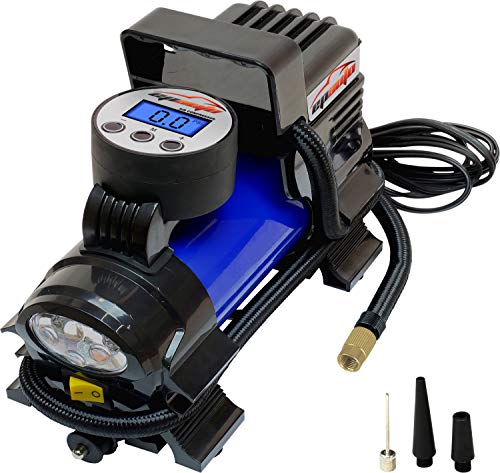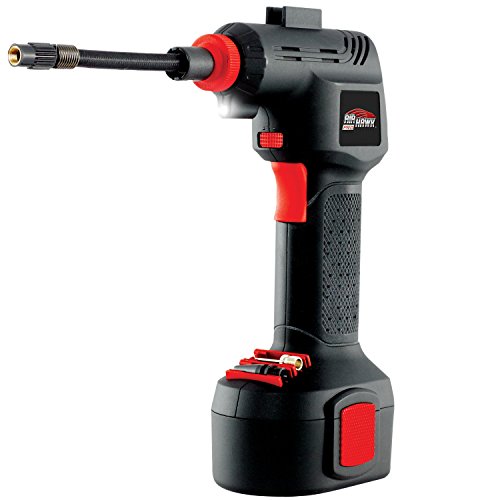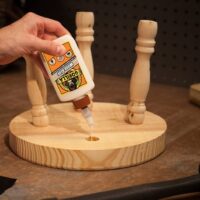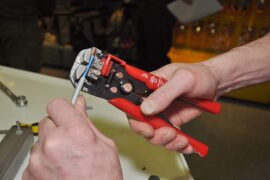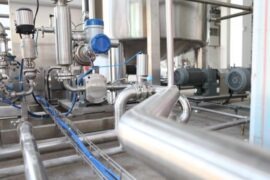According to a report, the extensive use of vehicles for daily purposes accounts for 33.48% of tire segments. This includes pumping up your tires which can be strenuous. Thankfully, this can be solved with the right tire inflator.
There are different types and styles of tire inflators that are best suited for everyday needs. As of today, air compressor-based types grab the most attention due to its portability, yet powerful capability. There are also hand-operated, compact, and CO2 tire inflators. As the name implies, hand-operated tire inflators use the operator’s hands to pump up the air. It is also the most common type of tire inflator. On the other hand, mini or compact pump tire inflators use a piston to squeeze the air while a CO2 tire inflator uses pressurized CO2 cartridges to inflate the tire.
In relation to that, tire inflators vary a lot due to the differences of their types. Nonetheless, if we’re talking about the best qualities of such a tool, it is the one that offers fast results, portability, and incredible features such as a gauge readability and high-pressure emission.
For compact features, you might want to check the Epauto 12 V DC Portable Air Compressor Pump. Besides its attractive features all packed in a small body, it is also a product of Epauto which is known for making accessories and tools for automobiles since 2007. Other brands that excel in the game are Kensun, Ontel, Briskmore, and Topeak.
To help you better decide among the mentioned brands, our experts rounded up the five best tire inflators suited for your different needs and preferences. Together with our comprehensive Buyer’s Guide, you will be at ease as we will directly highlight the best points you should look for in tire inflators.
Best Tire Inflators Comparison & Rating
1. EPAuto AT-101-1Z 12V DC Portable Air Compressor Pump
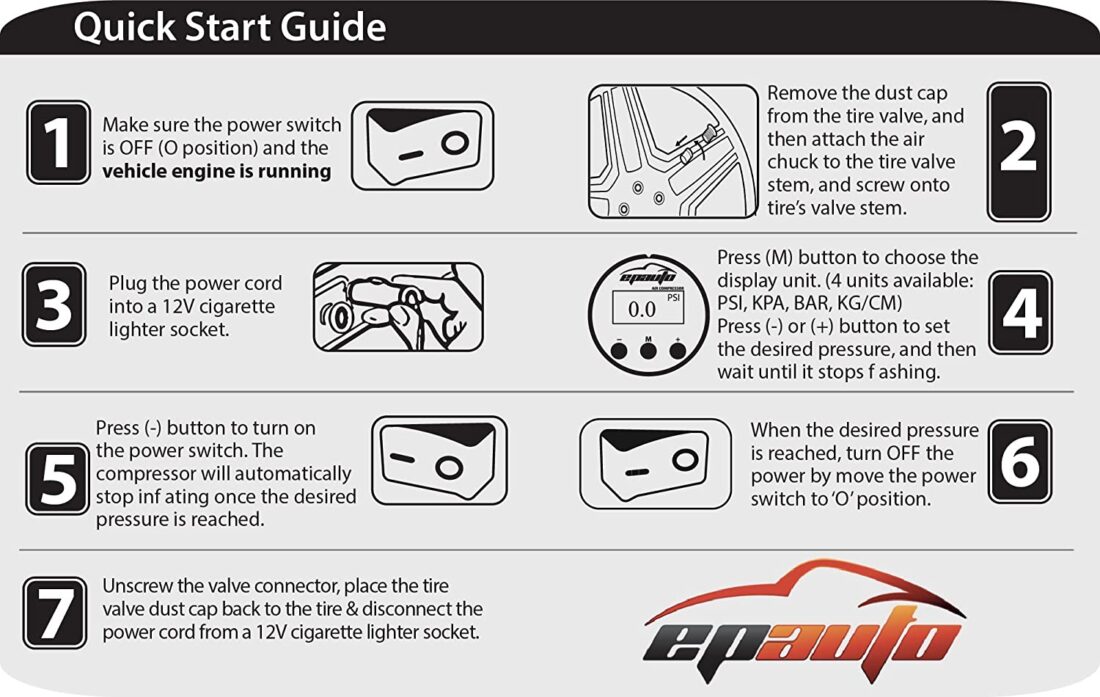
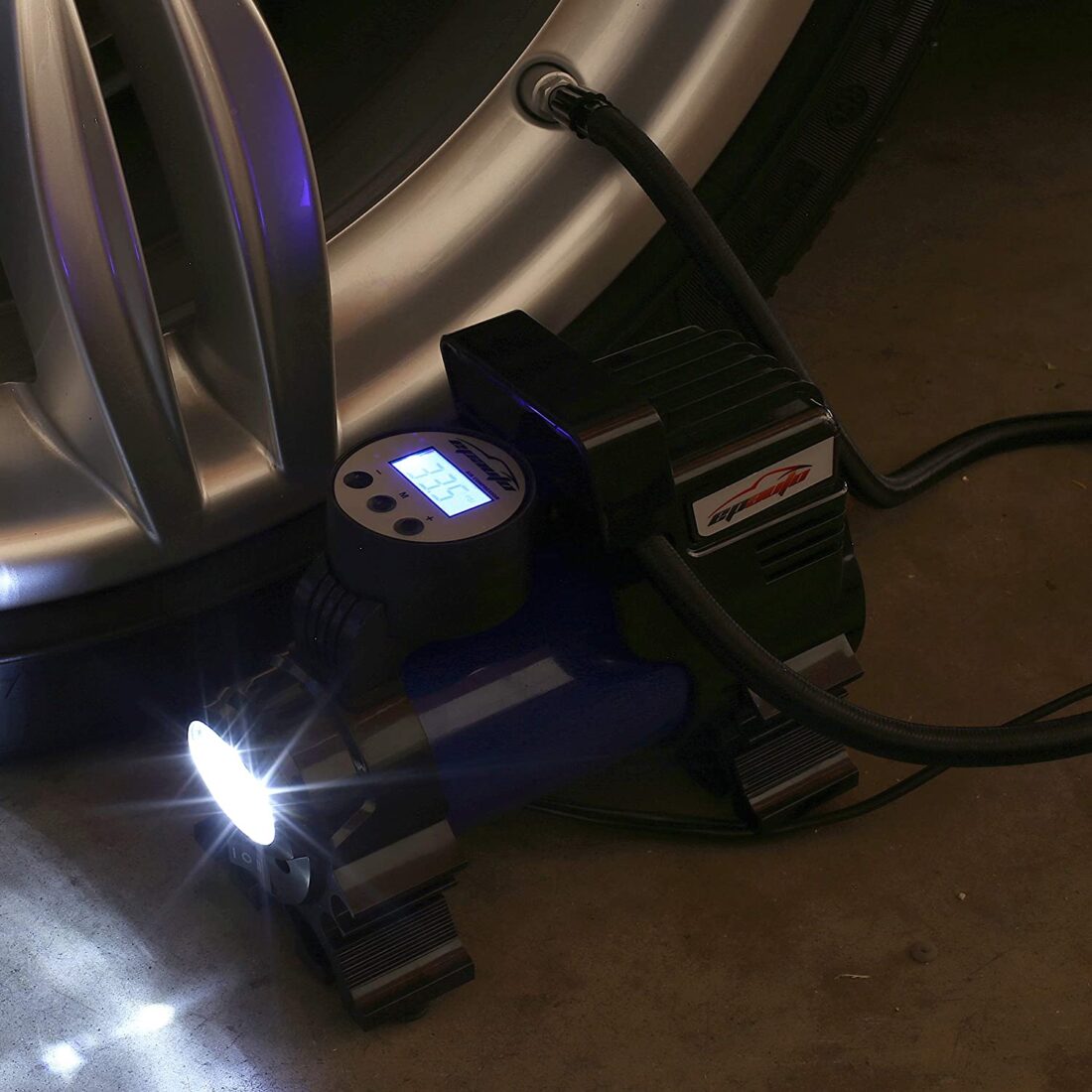


EPAuto is known for making accessories and tools for air compressors and this 12 V DC Portable Air Pump is just one of the brand’s masterpieces. It is powered by a DC power supply and can work by plugging into the cigarette lighter socket of your vehicle. Further, if your cigarette lighter cannot handle the power, this inflator has a power cable with a 15-amp fuse and a backup fuse for vehicle wiring protection.
What’s incredible about this tool is that it can easily fill large-sized tires (except truck tires) due to its 180-watt motor and 100 PSI inflating rate. Apart from this, overheating will also unlikely to occur because it automatically shuts off if it exceeds 167 °F.
This Epauto’s tire inflator is easy to use even at night as well, thanks to its LED lights for brighter visibility. Moreover, its digital meter displays different units including KPS, PSI, BAR, and kg/cm.
Another stand-out feature of this machine is its low-noise performance. It’s quite a small characteristic, yet a big advantage to those who love to work silently. All in all, this tire inflator is a big hit due to its portability accompanied by descent features.
2. Kensun KC-H Portable Air Compressor Pump
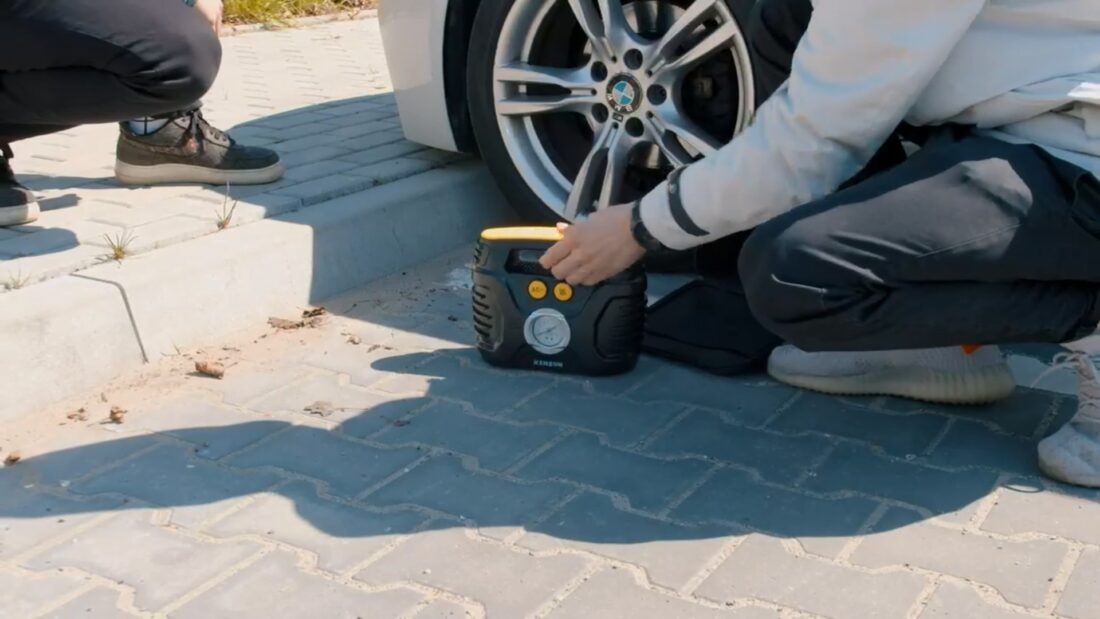
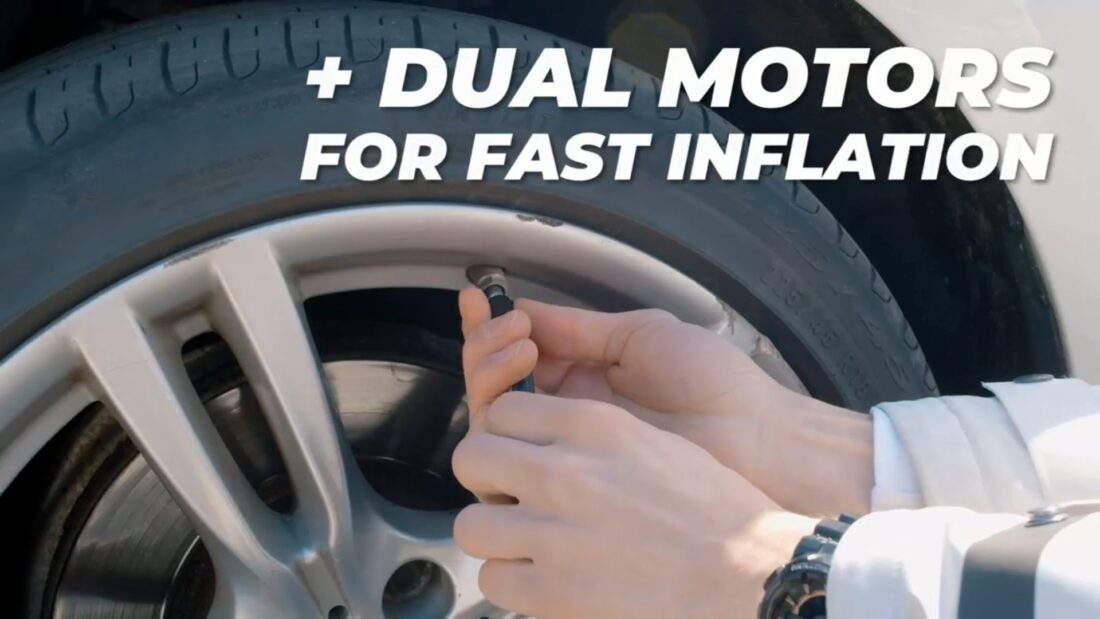
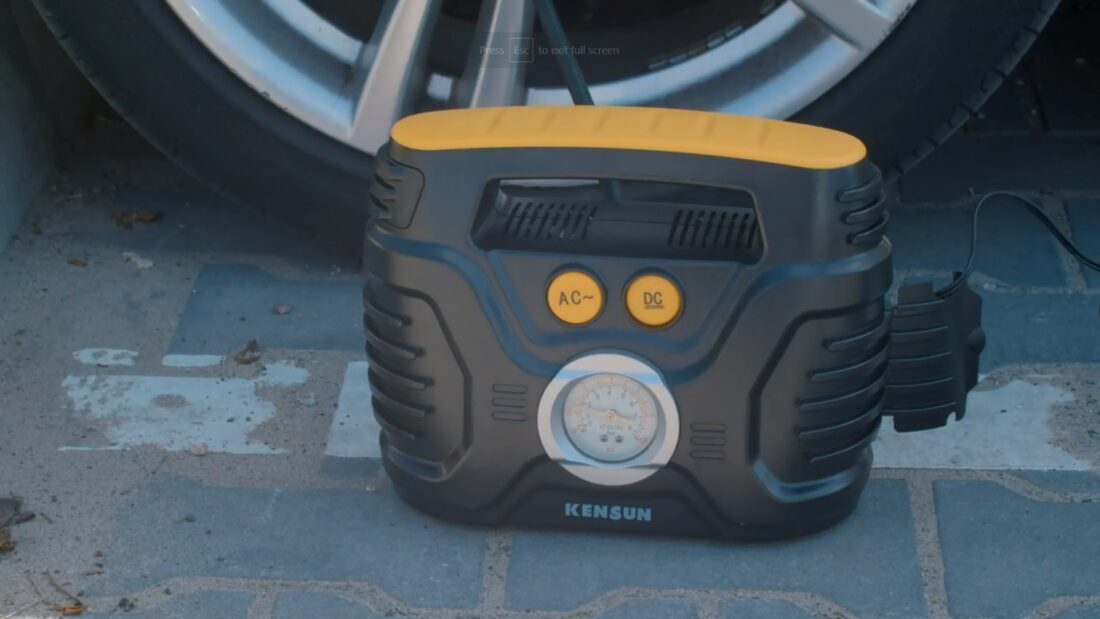
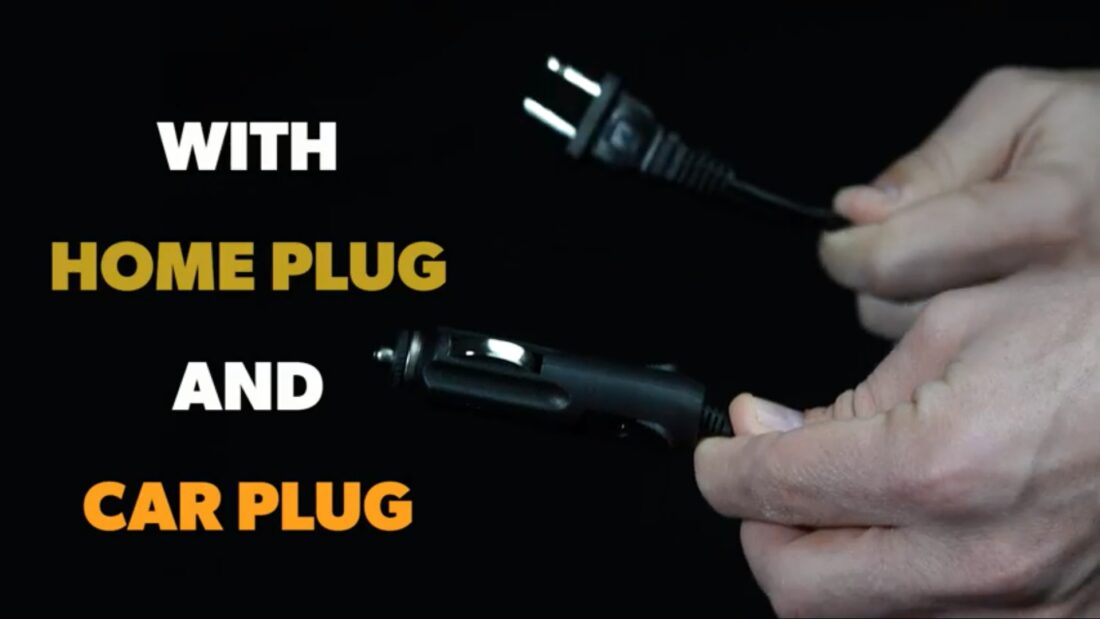
The Kensun portable air compressor provides a wide range of versatility among inflating options. It can be powered by both the 12 V cigarette lighter socket of your vehicle and the 110 V outlet of your home. It comes with a 3.3 m power cord for car plug and 1 m for home use.
As for the ergonomics, the unit won’t disappoint. It has an analog pressure gauge in three unit conversion (PSI/BAR/KPA). It is precise and easy to monitor as it is located at a middle strategic position of the tool. It is also heavy-duty since it has a power draw of 120 watts - a definite way in achieving enough energy flow for the motor.
3. Ontel Air Hawk Pro Automatic Cordless Tire Inflator

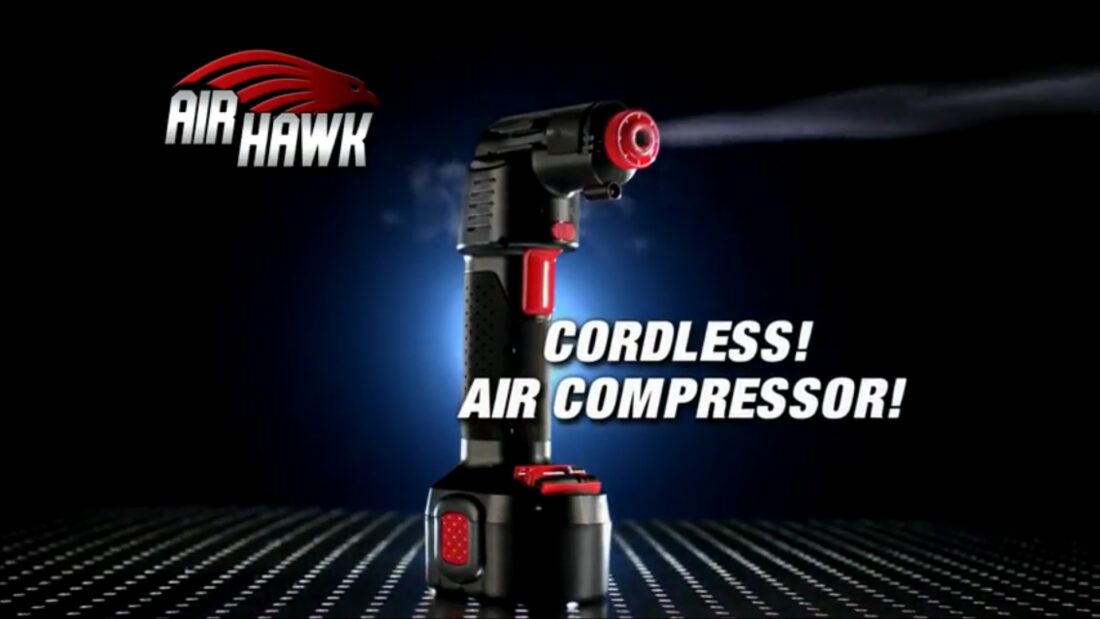
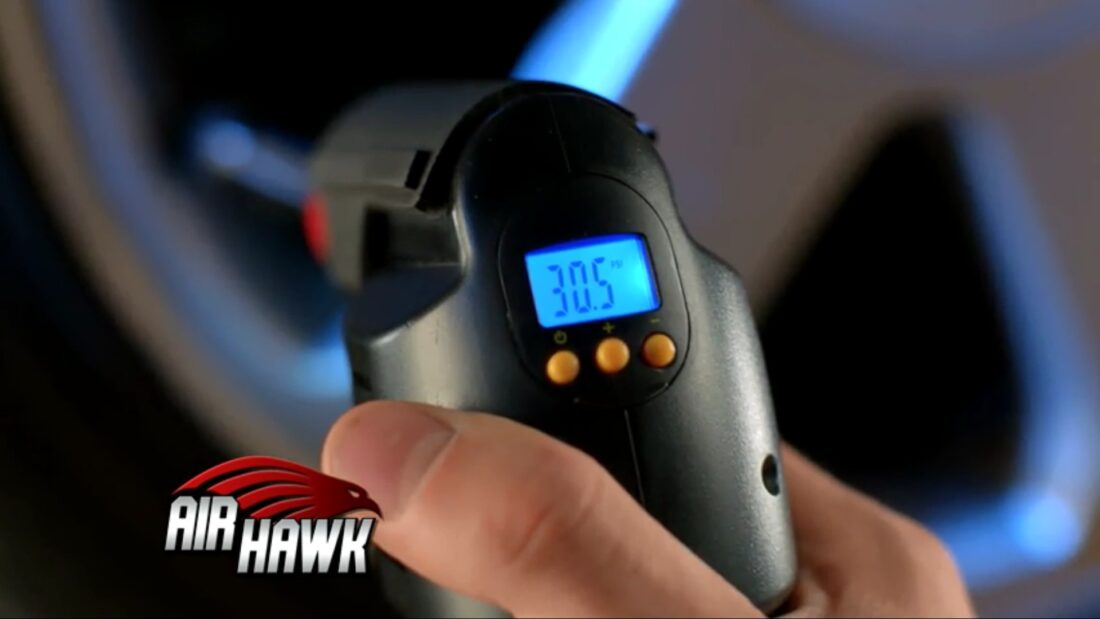
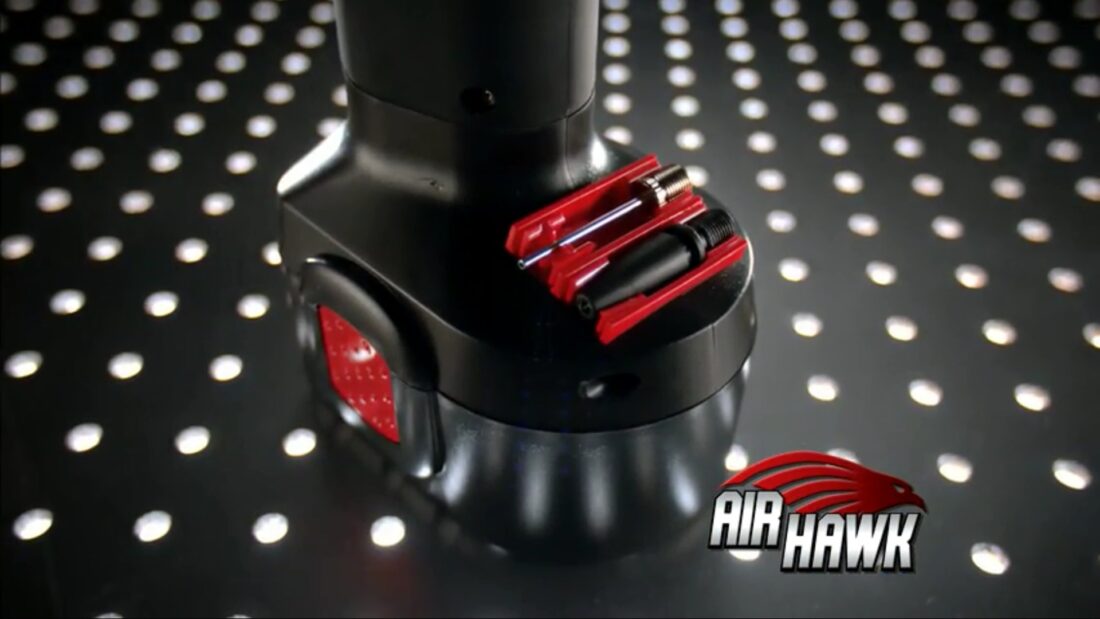
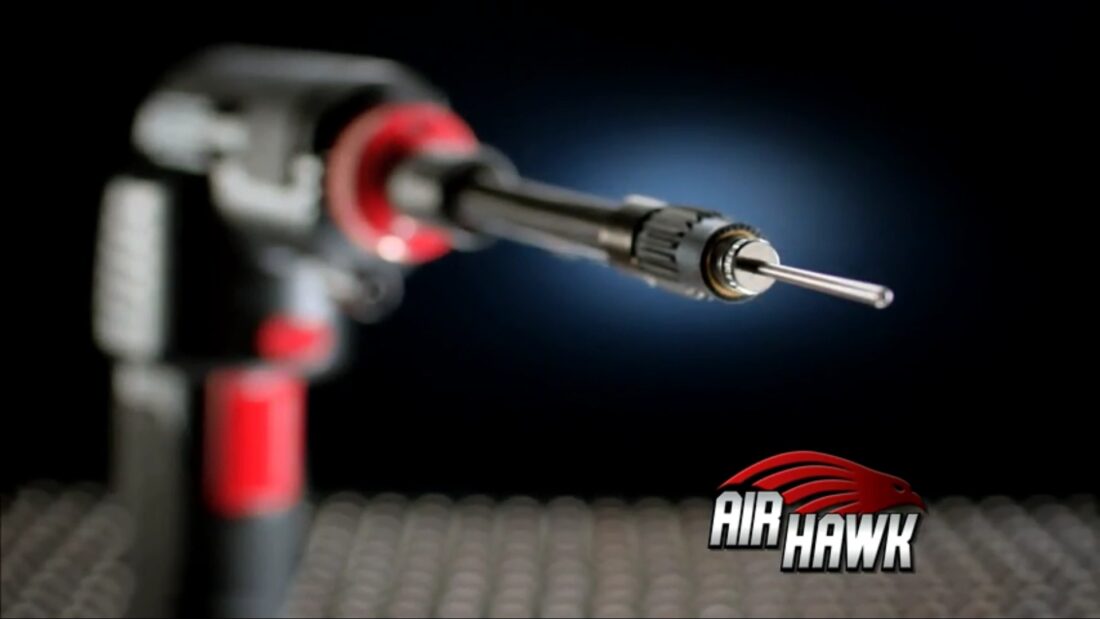
This Ontel air hawk tire inflator is cordless. Using this is far more portable as compared to the previous Kensun and Epauto inflators. It is powered by a rechargeable battery so you can use it anytime and anywhere as long as you charge it prior to use. Yet, in case you forgot to do this, you can also plug it in the 12 V cable adaptor or the 11-foot car adaptor if you need it for continuous use. Also, the purchase also comes with a 5-inch air hose which is truly great.
To use, simply connect the inflator, set the pressure, and squeeze and release the locking trigger to get started. It is pretty unique among other inflators as you are allowed to pre-set your desired air pressure. Once it completes its work in a span of minutes, the tool will automatically shut off to avoid overinflation. To monitor, this machine has a digital LED gauge for accurate tire measurement. It also has a built-in LED light which is a lot of help to illuminate the tire valves at night.
4. Topeak Road Morph G Mini Pump
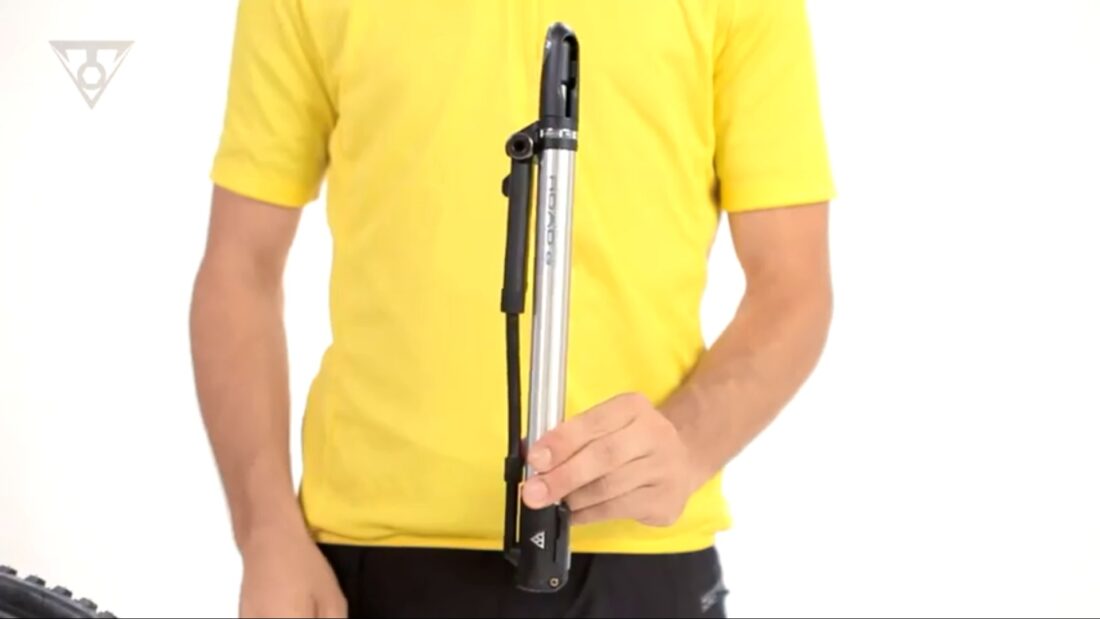
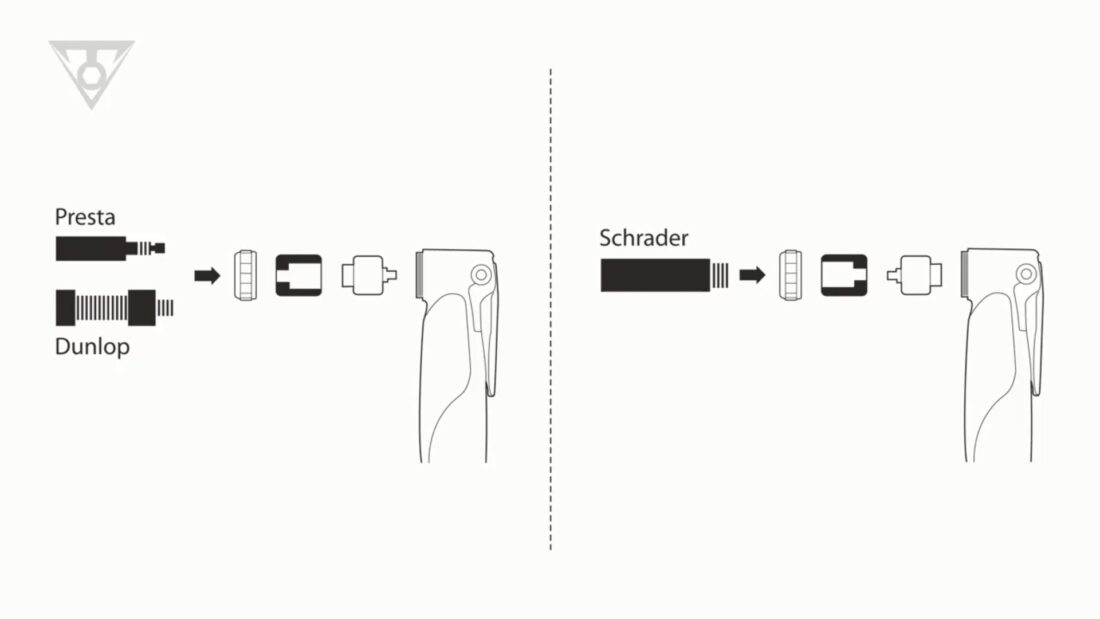
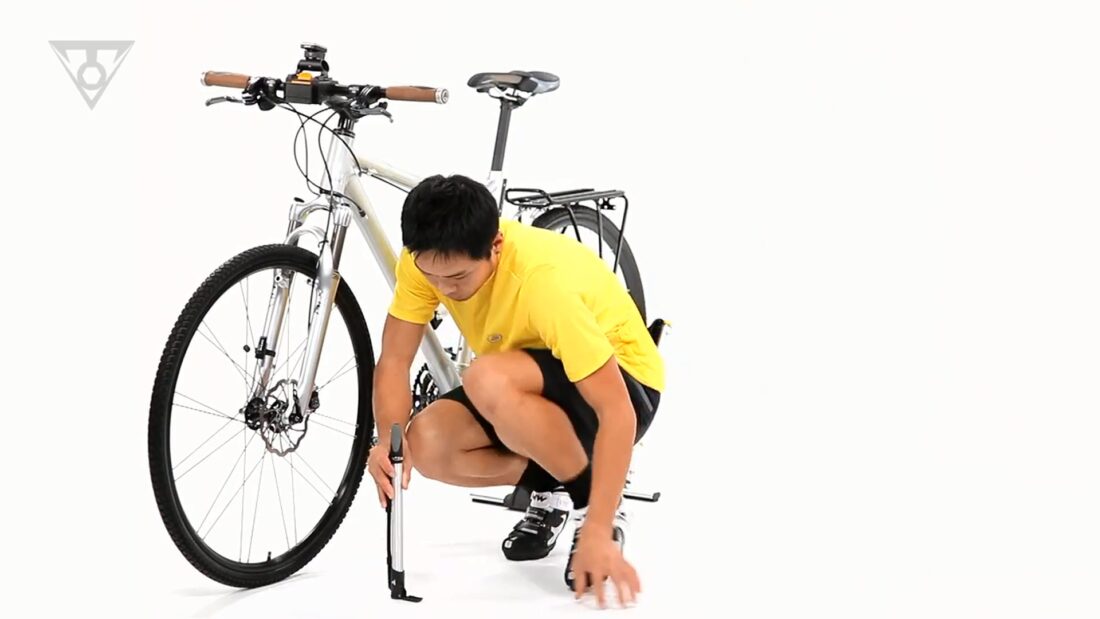
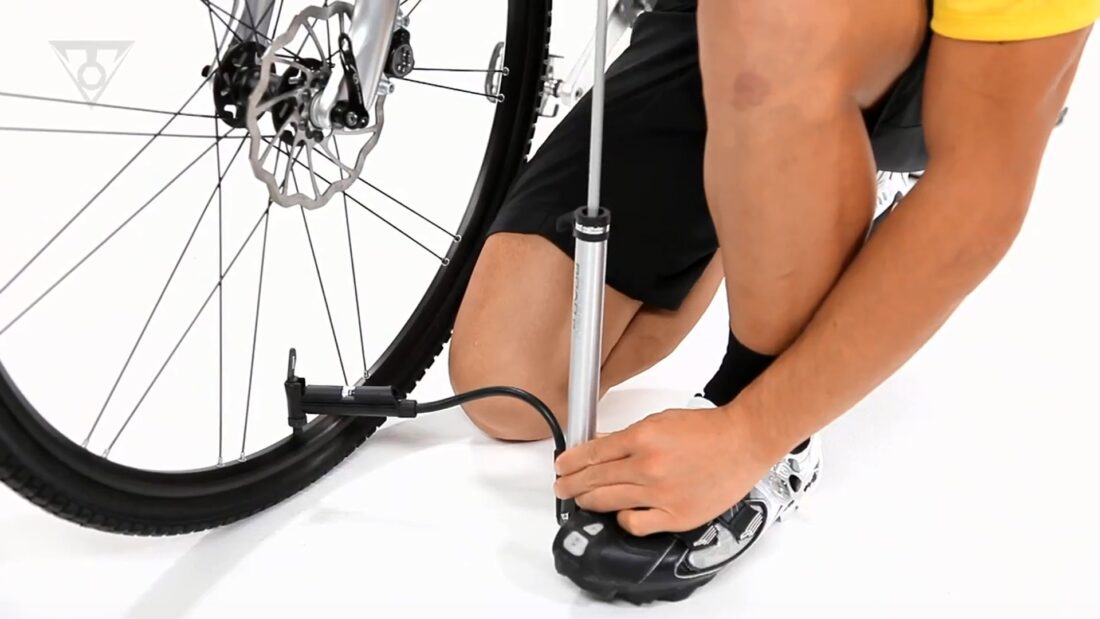

Topeak Road Morph G Mini Pump works just like the common hand-operated tire inflators. It has a T-type dual-density polymer handle and an improved fold-out footpad design. Compared to its former variant, this new model offers better features in terms of durability. Plus, the inflator has a great resistance against accidental falls.
As for its set-up, it is very simple and straightforward. To use, simply put the inflator on the floor and pump using your body weight. It uses a flexible air hose that can expand.
The good thing about this manual inflator is that you have great control over the pressure you need. The flip-out analog in-line gauge is also available to give you an overview of the pressure while inflating your tires. It reads up to 140 PSI/9.6 BAR.
It is also compact since it’s only 13.8 inches long. It is really slim that you can mount it on almost any bicycle frame. The head fits with Presta/Schrader/Dunlop valves. Neat!
5. BriskMore CO2 Inflator
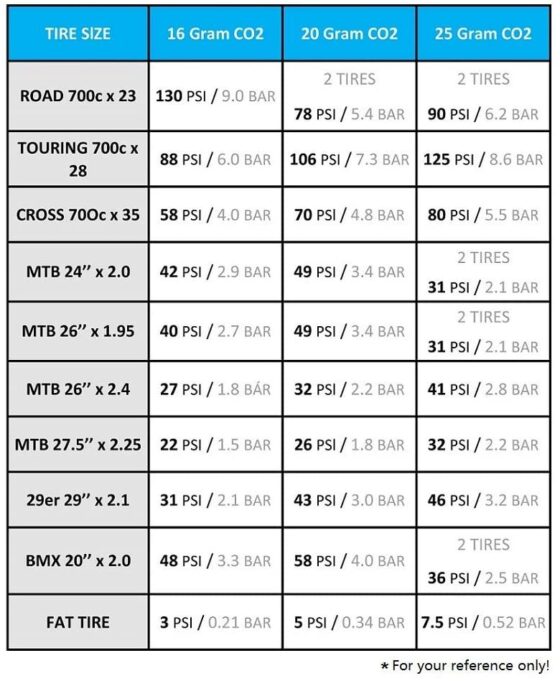
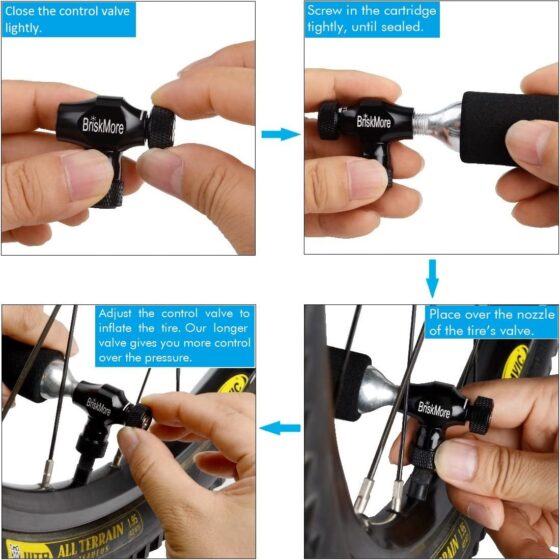

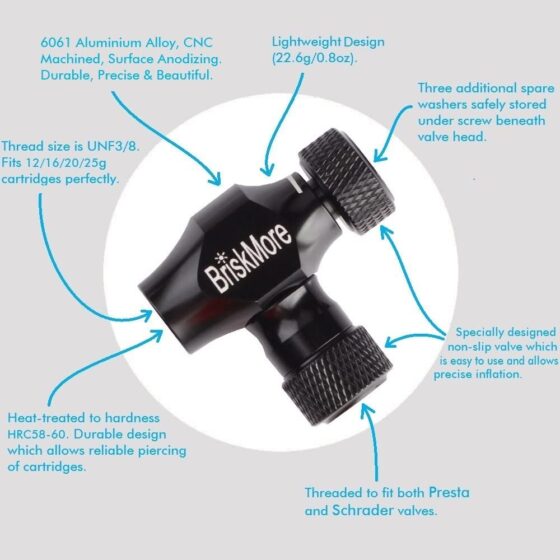
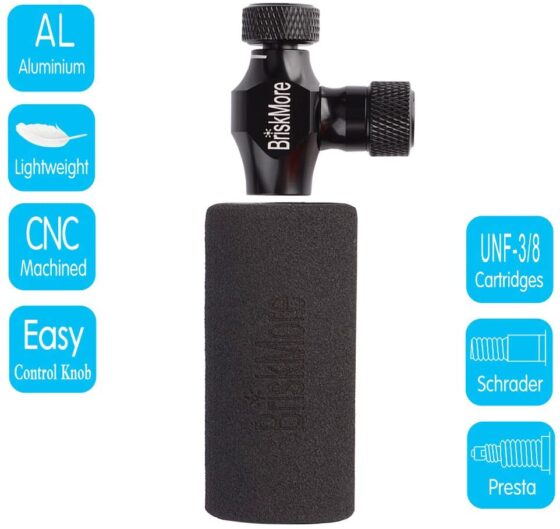
Before you purchase this product, it is important to know that the purchase does not come with CO2 cartridges and that it is just an attachment to the inflation kit set. Nonetheless, it is a very handy attachment that can provide great convenience. Furthermore, it is precisely machined and heat-treated to assure you of a lifetime use.
It works by transferring the air from the CO2 canister to the inner tube valve of the tire instantly. The Briskmore’s durable design allows a reliable piercing of cartridges. It uses UNF-3/8 cartridge thread size and fits in 16/20/25 g cartridges to deliver 22, 26, and 32 PSI, respectively. There are also 3 additional spare washers that are stored under a screw beneath the non-slip valve head to evenly distribute the load of the threaded fastener. Thus, reducing the risk of damage to the surface material.
To use, simply close the control valve lightly, screw in the cartridges until sealed, and then adjust the control valve to inflate the tire. Take note that the longer valve of this tool gives you more control over the inflating pressure which is impressive, given that it is only a small attachment.
Best Tire Inflators - Buyer's Guide
For electric tire inflators, there are two types of sources: AC and DC. Hence, they require you to connect the cords directly into the car’s cigarette plug-in batteries or outlet power source to function. For dual types of power sources, the Kensun Portable Air Compressor Pump is our top choice. Hand-operated tire inflators, on the other hand, work differently as they need to be manually used in order to achieve the pressure you need.
Higher air pressure means a faster inflating speed. However, it is best to remember that every tire has a recommended PSI. For bicycles, it is commonly printed on its side; close to where it touches the rim. For larger vehicles, it can be found on the vehicle’s owner’s manual. You should always refer to the manufacturer’s recommended pressure. After all, using the right pressure also does the job well.
It is also best to consider the PSI rating of the inflator itself. Though there are units that come with impressive PSI max ratings, it doesn’t mean that they work efficiently in achieving them. This still depends on what you are about to inflate and the time it will take for the unit to achieve the PSi you need.
Gauges are our guide to read the pressure during the inflation process. Therefore, clear and precise reading is a must to ensure that you are still on the right track of following the manufacturer’s recommended pressure. For this category, the digital meter provides a better vision. For the best experience, try purchasing either the Ontel Air Hawk or EPAuto portable tire inflators with LED gauges.
Tire inflators have different types, so expect that their performance will vary from one another. With this, it is important to identify the right type you need. When inflating bigger tires, it is better to opt for electrical models for convenience. On the other hand, if you think that the features of the said type are too much for your need, attachment and manual inflator models should be decent enough to address most general inflating needs.
Best Tire Inflators - FAQs
Air condenses in cooler temperatures. Hence, tire pressure drops at the freezing time of the year. Conversely, hot temperatures enable the pressure in the tires to become high. Henceforth, proper monitoring and reading the manuals saves you the time and energy of worrying about tire pressures.
The heat generated during driving also contributes to a temporary increase in tire pressure. For accurate measurement, check the tire pressure when it has been rested and cold after the ride.
The best thing to remember is that vehicle tires lose about one PSI every month after filling it in. Therefore, regular checking of the tire pressure is the key to know if you need to re-inflate your tire. Usually, a couple of huge losses in the tire pressure a month requires you to do the process.


